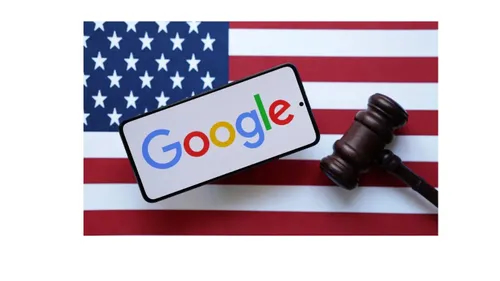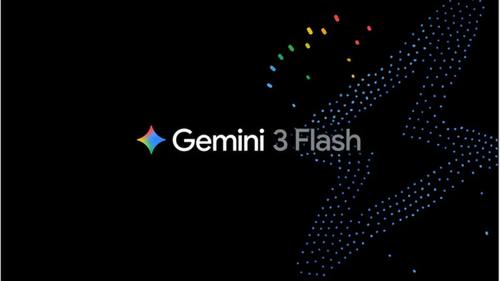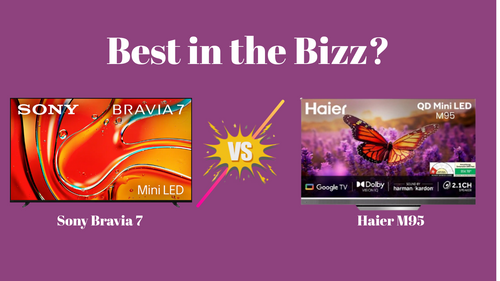Ad
Articles
Google’s Ad Tech Monopoly: What It Means for Consumers and the Global Market

The Growing Scrutiny of Google’s Ad Tech Monopoly
Google, the tech giant best known for its search engine, is facing legal heat once again—this time over its control of the online advertising market. The U.S. Department of Justice (DOJ) has accused Google of holding an illegal monopoly in the digital ad space, particularly the ads that pop up as you browse websites. This lawsuit, part of a series of legal challenges against Google, focuses on the company’s dominance in the realm of online advertising technology.
At stake is not just Google’s business model, but how online ads are sold, how much advertisers pay, and how much content creators can earn. The lawsuit has major implications not only for Google but for the entire digital advertising ecosystem.
Google’s Advertising Empire: The Tools in Question
Google’s online advertising technology spans several key products that help place ads on websites, manage ad buys, and run real-time auctions. Some of these include:
- DoubleClick – Helps place ads on websites.
- Google Ads – Where advertisers purchase ad space.
- AdExchange – Runs real-time auctions that match ads with websites looking to display them.
The DOJ argues that Google uses these tools to unfairly control the ad market, charging excessive fees for transactions and stifling competition. As a result, publishers—especially news organizations—are reportedly earning less revenue from ads than they should, while Google is generating substantial profits.
Google’s Defense: Market Share and Competition
Google, on the other hand, defends its actions by claiming that it’s not the only player in the online ad market. While it may dominate a portion of digital advertising, particularly in “open-web display advertising,” it maintains that its market share is relatively small when compared to the overall advertising landscape. Google states that its share of the total digital advertising market is only around 10%. Additionally, Google argues that its fees have been decreasing over time and that forcing it to share its technology with competitors would unfairly punish the company for its success.
The Case Against Google: Monopoly or Market Leadership?
The core of the DOJ’s case is that Google’s practices go beyond normal business competition and amount to monopolistic behavior. The company is accused of manipulating its ad technology to maintain a dominant position and push out competition. This includes:
- Excessive fees for advertisers.
- Control over the ad space limits the ability of smaller ad tech companies to compete.
- Disadvantaging content creators who don’t earn as much from ads due to Google’s inflated costs.
If found guilty, Google could be forced to sell off parts of its advertising business, potentially disrupting the entire digital ad industry.
What If Google Loses? Implications for the Industry

Should the court rule against Google, it would signal a significant shift in how digital advertising works. Advertisers could see reduced fees, while smaller competitors might get a chance to grow. News organizations and content creators might also benefit from increased ad revenue as competition rises. This case could reshape the advertising model that has largely been controlled by Google for years, especially in the areas of display ads and real-time auctions.
In the broader picture, a guilty verdict would show that even tech giants like Google are not above the law, setting a precedent for other companies that hold a dominant position in the market.
Market Structures and Monopolistic Practices: Understanding the Context
Markets can generally be classified into four types based on the level of competition, control over prices, and the number of participants. Understanding these structures helps explain why Google’s case is so significant.
- Perfect Competition
This market structure is a theoretical ideal. It features many buyers and sellers offering identical products. No one seller can influence the price, and all players have access to the same information. While rare in reality, agricultural markets, like wheat and corn, come closest to this model.
- Monopolistic Competition
In monopolistic competition, many sellers offer similar but differentiated products. Examples include restaurants, clothing brands, and electronics. Firms can set prices somewhat independently, but competition keeps them in check.
- Oligopoly
An oligopoly occurs when a small number of firms dominate the market. These companies have significant control over prices and actions but still face competition from a limited number of players. Industries like automotive, telecommunications, and airlines are examples.
- Monopoly
A monopoly exists when a single seller controls the entire market. With no competition, the monopolist has considerable power over prices. Examples of monopolies include public utilities like water or electricity services in some regions. Google’s behavior in the online ad space seems to fall closer to a monopoly or oligopoly, with the company wielding considerable control over how ads are bought, sold, and displayed on websites.
Global Efforts to Regulate Google and Promote Fair Competition
While the U.S. Department of Justice is working to curb Google’s alleged monopolistic practices, other countries have similar regulations to ensure that no single company gains too much power in the market. Let's take a look at India’s and global efforts to promote competition.
India’s Regulatory Framework
India has a strong set of regulations aimed at curbing monopolistic practices:
1. Competition Act, 2002:
This act prevents anti-competitive practices and ensures fair competition. The Competition Commission of India (CCI) can investigate companies that hold a dominant position in the market and abuse their power. Google’s practices in online advertising, for instance, could fall under Section 4, which addresses such abuses.
2. Consumer Protection Act, 2019:
This Act protects consumers from unfair trade practices, including monopolistic behaviors that inflate prices or reduce choice. Google’s conduct in the ad space could be challenged under this act if it harms consumers.
3. Information Technology Rules, 2021:
These rules focus on digital platforms and promote fairness in online content and advertising. They ensure that companies like Google don’t dominate the flow of digital content and advertising.
4. Telecom Regulatory Authority of India (TRAI):
While focused on telecommunications, TRAI also regulates the digital sector to ensure no player can monopolize services or content delivery.
International Regulations Against Monopolistic Behavior
Countries across the globe have taken steps to regulate companies like Google and prevent monopolistic practices:
- European Union (EU) Competition Law – The EU has one of the strictest competition laws, focusing on preventing monopolies and ensuring fair competition. Google has already faced multiple fines here, including a €2.42 billion fine in 2017 for promoting its comparison shopping service unfairly.
- U.S. Antitrust Laws – The U.S. has a long history of regulating monopolies through the Sherman Antitrust Act (1890) and the Clayton Antitrust Act (1914). The DOJ is currently investigating whether Google’s advertising practices violate these laws.
- UK Competition and Markets Authority (CMA) – The CMA investigates monopolistic behaviors in the UK. In 2020, it launched an investigation into Google’s dominance in the ad tech space, signaling growing concerns similar to those in the U.S. case.
- Australia’s ACCC – The Australian Competition and Consumer Commission (ACCC) has scrutinized Google’s market power and its effects on Australian businesses, particularly in digital advertising.
- Canada’s Competition Bureau – Canada also keeps a close eye on monopolistic practices in digital markets, with the Competition Bureau investigating Google’s dominance in search and advertising services.
The Bottom Line: What’s Next?
The ongoing legal case against Google is more than just a battle between a tech giant and the government. It represents a crucial moment for the future of online advertising and market competition. If the court rules against Google, it could lead to significant changes in the digital ad ecosystem, potentially lowering costs for advertisers, benefiting consumers, and giving smaller competitors a fighting chance.

Whether or not Google is found guilty, the case is a reminder of the importance of regulations that ensure fair competition and prevent abuse of market power. As digital advertising continues to shape the way we interact with the internet, the outcome of this case could have ripple effects that influence global markets and the future of online commerce.
The Future of Online Advertising
The battle over Google’s ad tech monopoly is a pivotal moment in the fight for fair competition in the digital age. As the U.S. court prepares to make its ruling, all eyes will be on how it might reshape the online ad landscape. Consumers, advertisers, and content creators all have a stake in the outcome, and it could ultimately determine whether Google’s dominance continues unchecked or if the market opens up for new players to thrive.
Regardless of the outcome, this case underscores the need for strong regulations to ensure that big tech companies don’t have too much power over our digital lives. As we move toward an increasingly digital world, ensuring fairness and competition will be essential for the health of both the market and the consumer experience.
Follow Us:
Ad
Recent News

Realme Narzo 90x 5G Goes on Sale in India Today
23-Dec-2025 06:59 AM

Samsung Unveils Exynos 2600, the World's First 2 nm Chipset
19-Dec-2025 06:30 AM

Google Unveils Gemini 3 Flash: Faster AI That Outshines Pro Model
18-Dec-2025 09:55 AM

Motorola Edge 70 Launches in India: Slim Design, Strong Battery
15-Dec-2025 07:14 AM

Jio’s Happy New Year 2026 Plans: Get Unlimited 5G and more
15-Dec-2025 06:38 AM
Reviews & Guides
View All

Nothing Phone 3a Community Edition First Impressions: A Fresh Take on Budget Smartphones

Realme P4x 5G Review: Budget-Friendly Beast with Epic Battery Life

Sony BRAVIA 7 Mini LED K-65XR70 vs. Haier Mini LED H65M95EUX

Samsung QN90F (65QN90FAU) Review: The King of Bright-Room Viewing

Why doesn’t Apple reveal the iPhone battery in advertisements?

Donald Trump Watch Collection: Timeless Luxury on the Wrist

Best 5 Litre Water Heaters in India 2025: Top Latest Models for Quick Hot Water

Top 10 camera lenses you should Own in 2025
Ad
Latest Mobiles In India
Ad
Ad












